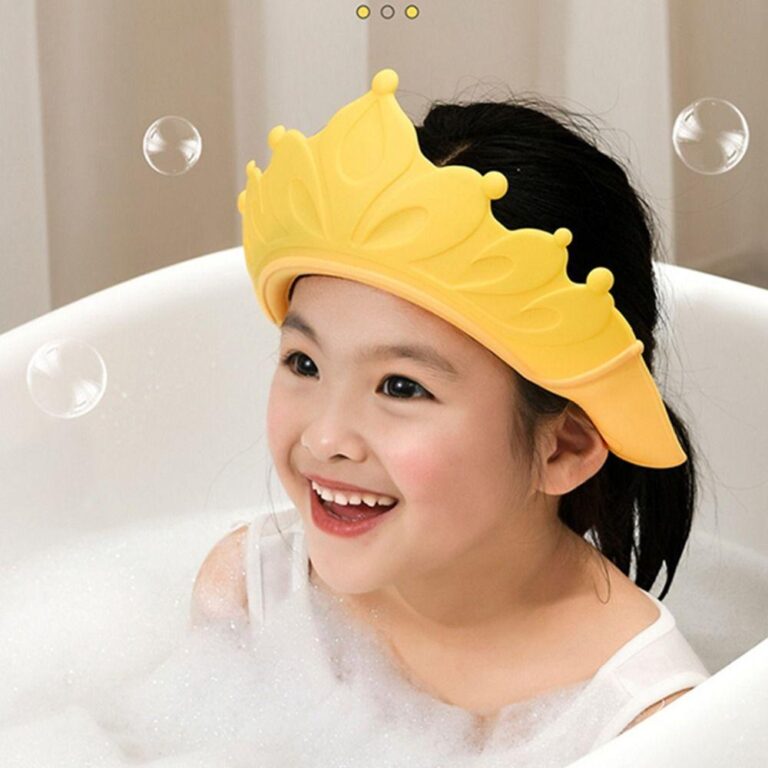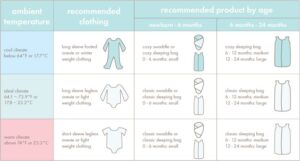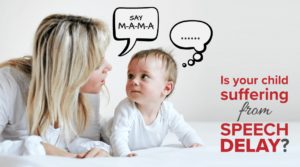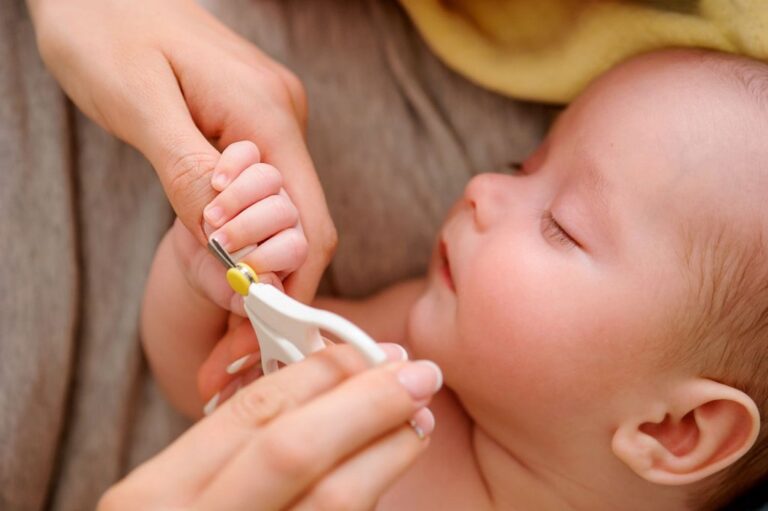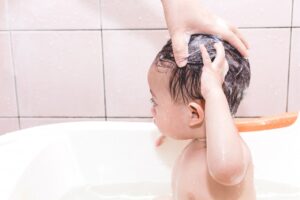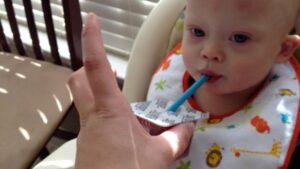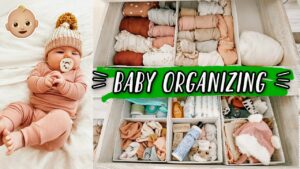What is a Baby Shower Head Protector?
A baby shower head protector is a wearable, water-resistant shield designed to protect your baby’s face, eyes, and ears from water and shampoo during bath time. Shaped like a cap or visor, these protectors usually come with an adjustable band to ensure a snug and comfortable fit.
Baby shower head protectors are made from soft, flexible materials such as silicone or EVA foam. They are designed to channel water away from your baby’s face, making bath time safer and more enjoyable. This simple accessory helps reduce the stress of bathing a squirming infant or toddler and minimizes the risk of shampoo or soap irritation.
Why You Need a Baby Shower Head Protector
Many parents wonder if a baby shower head protector is vital. Here are some key reasons why you might want to invest in one:
1. Prevents Water and Shampoo Irritation
Babies’ eyes and skin are sensitive. A shower head protector keeps shampoo and soap from trickling into their eyes, reducing discomfort and irritation.
2. Reduces Bath Time Stress
Bath time can be a struggle if your baby fears water. A protector helps ease this fear by shielding their face, making bath time less stressful for both you and your little one.
3. Encourages Independence
As your child grows, they may resist help during bath time. A shower head protector empowers them to enjoy washing their hair independently.
4. Protects Ears
Some babies are prone to ear infections. A well-designed head protector can prevent water from getting into their ears.
Top Features to Look for in a Baby Shower Head Protector
Choosing the right shower head protector can make a huge difference. Here are some essential features to consider:
1. Material
Opt for safe, non-toxic materials like silicone or EVA foam. These materials are durable, water-resistant, and comfortable against your baby’s skin.
2. Adjustability
Babies grow quickly. Look for protectors with adjustable straps or buttons to ensure a custom fit as your child grows.
3. Comfort and Fit
A good head protector should fit snugly but not too tightly. The design should be lightweight and comfortable to wear for longer bath sessions.
4. Waterproof and Durable
Ensure the protector is 100% waterproof and durable enough to withstand regular use.
5. Easy to Clean
Choose a design that is easy to clean or rinse after each use to maintain hygiene.
Best Baby Shower Head Protectors on the Market
Here are some of the top-rated baby shower head protectors available in 2024:
1. BabyBibi Adjustable Baby Shower Cap
- Material: Soft EVA foam
- Features: Adjustable strap, waterproof, durable
- Pros: Affordable, lightweight, easy to clean
- Best For: Budget-conscious parents
2. Munchkin Soft Silicone Shower Visor
- Material: BPA-free silicone
- Features: Flexible fit, soft material, ear protection
- Pros: Gentle on the skin, no-slip design
- Best For: Babies prone to ear infections
3. Skip Hop Bath Time Shield
- Material: Phthalate-free plastic
- Features: Full face coverage, adjustable fit, playful design
- Pros: Fun designs, sturdy build, reliable protection
- Best For: Toddlers who love playful bath gear
Each of these products has been tested and reviewed positively by parents. Consider your baby’s needs and preferences when making a choice.

How to Use a Baby Shower Head Protector Correctly
Using a baby shower head protector is straightforward, but following these steps ensures the best results:
- Adjust the Fit:
Place the protector around your baby’s head, adjusting the strap or buttons until it fits snugly but comfortably. - Position the Visor:
Make sure the brim of the protector sits slightly above the eyebrows and covers the forehead. - Test Before Bath Time:
Let your baby wear the protector before bath time to get used to the feeling. - Pour Water Carefully:
Gently pour water over your baby’s head, allowing the visor to channel the water away from their face.
Tips for a Safe and Enjoyable Bath Time
Making bath time safe and enjoyable is key to building a positive experience for your baby. Here are some practical tips to follow:
1. Ensure the Water Temperature is Just Right
- The ideal bath temperature for babies is around 98.6°F (37°C).
- Use a baby bath thermometer to check the water temperature.
2. Keep Everything Within Arm’s Reach
- Have essentials like soap, shampoo, towels, and a shower head protector within easy reach.
- This helps you stay focused on your baby without distractions.
3. Create a Calming Atmosphere
- Soft lighting, gentle music, or soothing words can help relax your baby during bath time.
- Engage them with toys or playful bubbles to make bath time fun.
4. Never Leave Your Baby Unattended
- Even a few seconds away can pose a risk. Always stay close and keep your hands ready to support your baby.
5. Make Drying Off Comfortable
- Use a soft, warm towel immediately after bath time. Pat your baby dry gently to avoid skin irritation.
6. Keep Bath Time Short
- 10 to 15 minutes is ideal for a baby’s bath time. Longer baths can lead to dry skin.
Benefits of Using a Baby Shower Head Protector
Using a baby shower head protector offers numerous benefits that make bath time safer and more enjoyable for both you and your baby.
1. Reduces Tears and Tantrums
Babies often cry when shampoo or water gets into their eyes. A shower head protector eliminates this discomfort, making bath time more pleasant.
2. Promotes Consistent Hygiene
When bath time is stress-free, it’s easier to establish a consistent routine, ensuring your baby stays clean and fresh.
3. Boosts Confidence
A relaxed, tear-free bath helps your baby feel more confident in the water, setting the stage for easier transitions to independent bathing.
4. Affordable and Long-Lasting
Most shower head protectors are budget-friendly and can last through your child’s early years, offering excellent value for money.
5. Peace of Mind for Parents
Knowing your baby is protected from water-related irritations gives you peace of mind during bath time.
Common Mistakes to Avoid
Even with the best tools, mistakes can happen. Here are some pitfalls to avoid when using a baby shower head protector:
1. Choosing the Wrong Size
- Ensure the protector is adjustable and fits snugly on your baby’s head. A loose protector won’t keep water out effectively.
2. Ignoring Your Baby’s Comfort
- If your baby shows discomfort, check if the protector is too tight or irritating the skin. Adjust the fit as needed.
3. Forgetting to Check the Material
- Choose protectors made from BPA-free, non-toxic materials to ensure the safety of your baby.
4. Not Practicing Before Bath Time
- Introduce the protector outside of bath time to get your baby used to wearing it. This reduces resistance during actual baths.
5. Overfilling the Bathtub
- Keep water levels shallow to avoid unnecessary splashing and make the protector more effective.
FAQs About Baby Shower Head Protectors
1. At What Age Can I Start Using a Baby Shower Head Protector?
Most shower head protectors are suitable for babies as young as 6 months. Ensure your baby can sit up unassisted before introducing one.
2. How Do I Clean a Baby Shower Head Protector?
Wipe the protector with a damp cloth or rinse it under running water. Allow it to air dry after each use to prevent mold or mildew buildup.
3. Is a Baby Shower Head Protector Safe for Newborns?
It’s generally better to wait until your baby can sit up independently. For newborns, use gentle water-pouring techniques instead.
4. Can the Protector Be Used in a Shower Instead of a Bath?
Yes! Shower head protectors work well for both baths and showers, especially for toddlers who prefer standing up.
5. What If My Baby Doesn’t Like Wearing It?
Introduce the protector gradually. Let your baby play with it or watch you wear it first to make it seem less intimidating.
Conclusion
A baby shower head protector is a simple yet essential tool for making bath time stress-free, safe, and enjoyable. With a wide range of options available, you can easily find one that suits your baby’s needs and preferences. By investing in the right shower head protector, you’re not only protecting your baby’s sensitive eyes and ears but also creating a positive bath time experience for years to come.
Whether you’re a new parent or have a growing toddler, using a baby shower head protector can make all the difference. Happy bathing!

